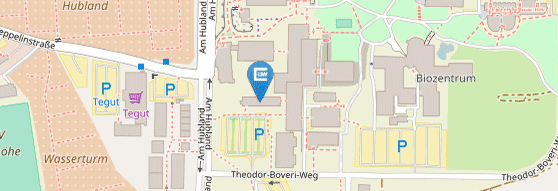Project 7
Project leader:
Jens Pflaum
Julius-Maximilians-Universität Würzburg
Physikalisches Institut
Am Hubland, 97074 Würzburg
Telefon: +49 931 -31 83118
E-Mail: jens.pflaum@physik.uni-wuerzburg.de
This project aims for investigation of the primary optical excitations and their dynamic behavior in crystalline structures made of molecular semiconductors. As a key issue we will analyze the influence of spatially confined excitation volumes and their interfaces on the excitonic states and their temporal evolution. For this purpose, long-range ordered monolayers as well as bulk single crystals with self-organized, epitaxial surface structures will be prepared of polyaromatic molecules, such as rubrene or perylene-derivatives, via sublimation. Thereafter, these samples will be structurally and optically characterized, the latter by photoluminescence measurements at micrometer lateral resolution. The essential information on the energetics of the excitonic states will be obtained by their spectral characterization and the relaxation dynamics as well as activation energies will be deduced as a function of lateral position and temperature in a range between 4 and 400 K. In case of crystalline layers we will address questions on the impact of the surface-tovolume-ratio as well as of the translational invariance at the interfaces on the localization and delocalization of optical excitations. Applying capping layers with different properties provides an additional degree of freedom to vary the structural and electronic interface characteristics in a controlled and reliable fashion and thus to study their influence. We will draw our attention on the energy position of optical excitations and the variation or even suppression of relaxation channels by the size of the excitation volume as well as by interfacial states. Extending those studies to microscopic surface structures on-top of molecular single crystals will reveal profound insights in the spatial anisotropy of the related phenomena. By means of the entire sets of data we intend to develop a detailed understanding of the optically excited states in crystalline molecular stacks and of their influence by geometrical boundary conditions. In the course of these studies not only the microscopic excitonic processes, such as singlet exciton fission, and their utilization in optoelectronic device concepts will be evaluated but also innovative structures with defined functionalities will be prepared. As a key topic, the combination of spatially confined excitation volumes and tailored boundaries will be utilized to couple single molecules to the local field distribution. By their modified emission characteristics we will establish an approach towards new functionalities, which are essential e.g. for the implementation of non-classical, single photon sources. To achieve the described objectives, a concerted approach by various partners comprising expertise on the subject of synthesis, ultrafast spectroscopy and theoretical modelling is inevitable. All these requirements are fulfilled and guaranteed by the applied research unit FOR1809.

